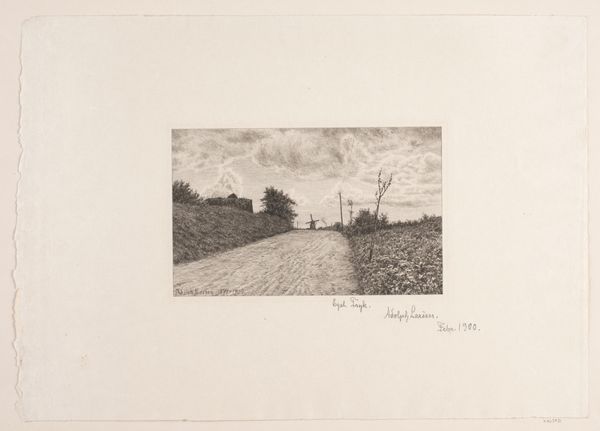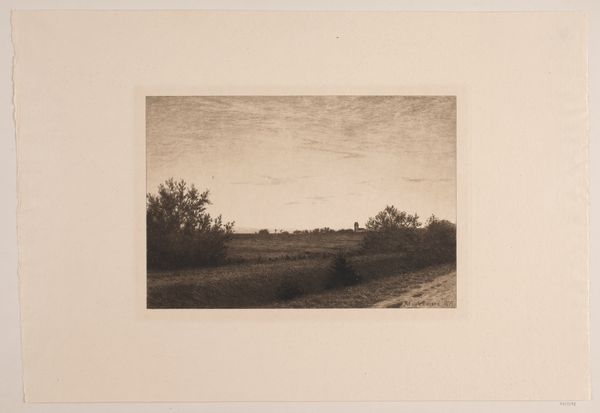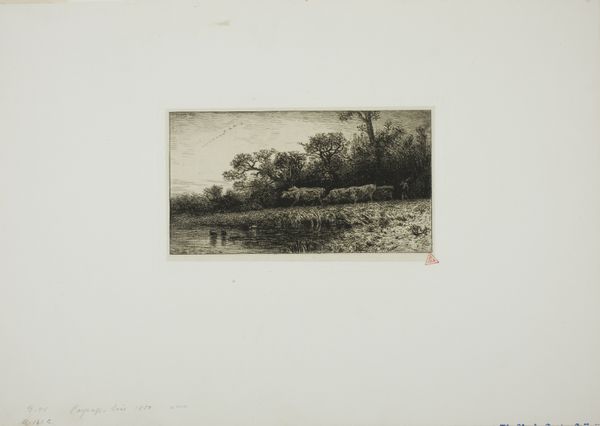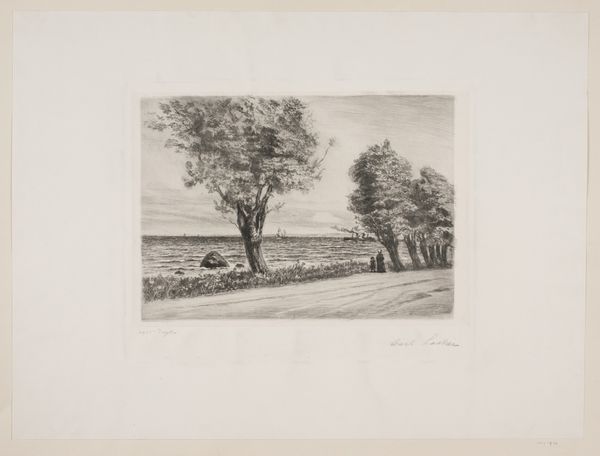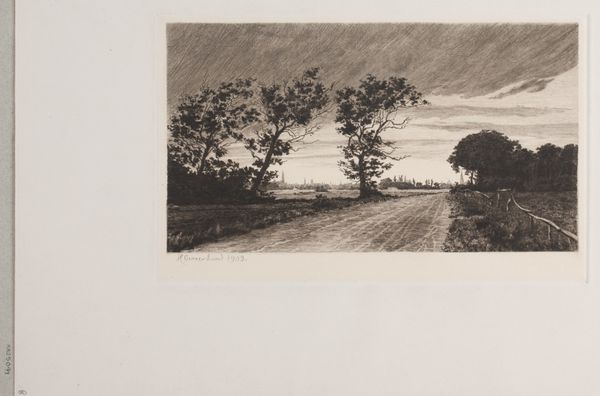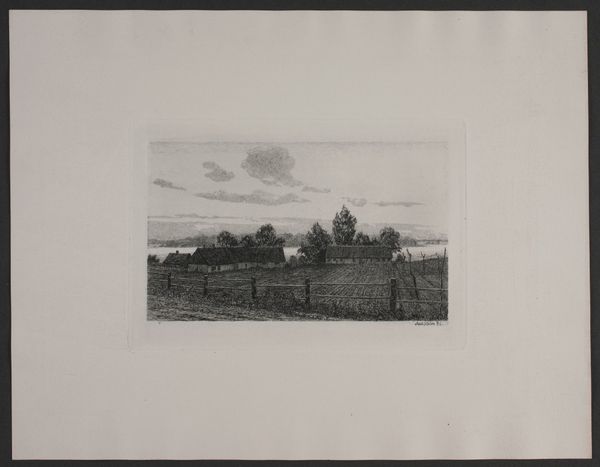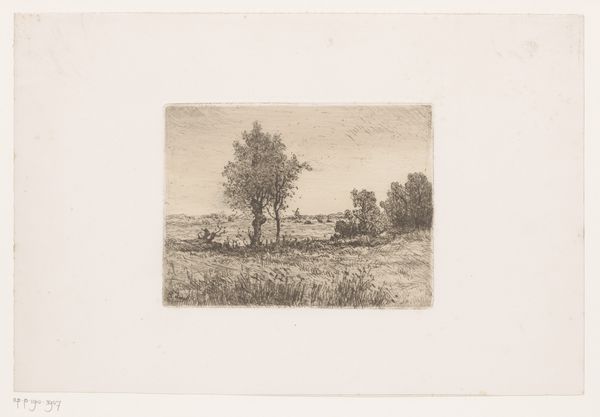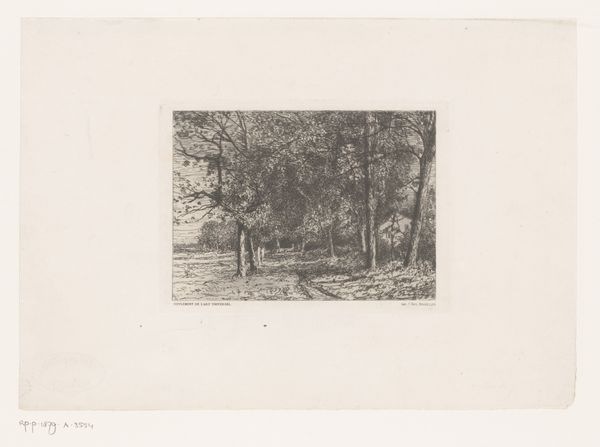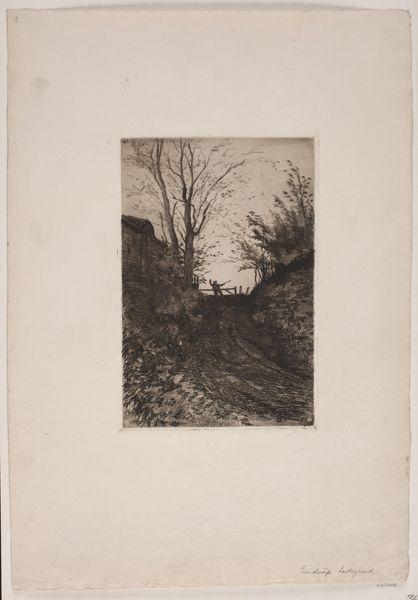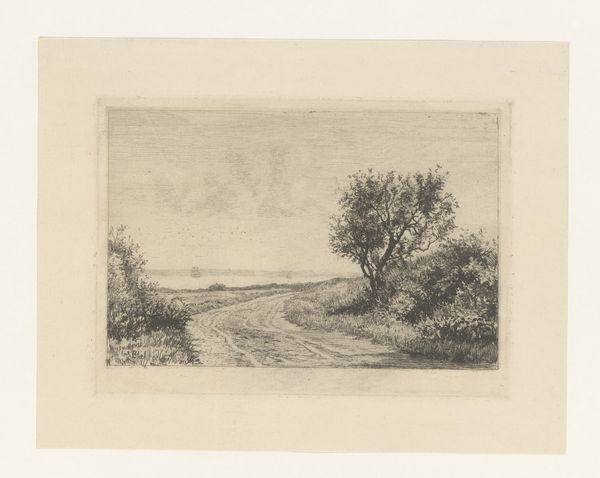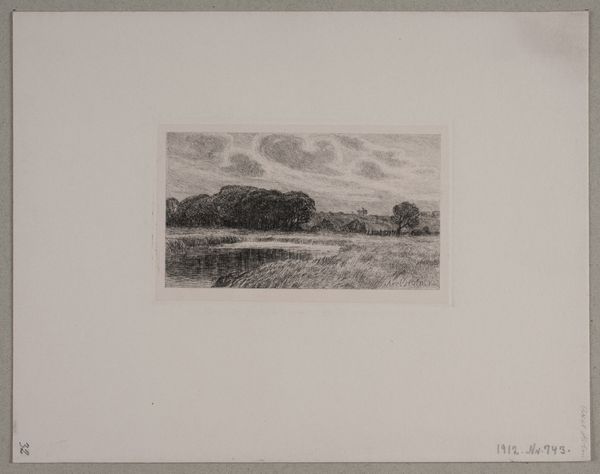
Dimensions: 133 mm (height) x 204 mm (width) (plademaal)
Curator: "Vej ved Birkerød. Aften" - or, "Road near Birkerød. Evening" is an etching created by Adolph Larsen between 1899 and 1900. It's part of the collection at the SMK, Statens Museum for Kunst. What do you make of it? Editor: Hmm, the first thing I notice is how incredibly textural it is. I’m drawn to the physical feeling of that rough, uneven road, and then contrasted by those billowing, almost oppressive clouds above. The lone windmill in the distance adds a feeling of stark isolation to it. Curator: It's interesting you pick up on the texture because, in etching, the artist is essentially creating those tactile elements through controlled corrosion on a metal plate, typically copper or zinc. It speaks volumes about the amount of labor and deliberate actions to give form to his artistic intention. Editor: Precisely. And you see that translated in the final print—there's an inherent physicality, a weightiness that seems fitting for this scene. You know, the everyday grind and the sheer force that shaped that road, its use, and it all makes me reflect on how the rural landscapes were starting to feel the pressures of industrial development even back then. That lonely windmill—almost a monument to a fading way of life. Curator: Absolutely. And beyond the subject, Larsen was clearly influenced by Impressionism in his way of rendering light and shadow. Look at the tiny flecks and lines that create the grassy verge and the sense of a humid atmosphere hanging heavy in the air. But I would also argue there’s a healthy dose of realism here in capturing the ordinary, the unglamorous face of rural life. It makes me wonder what type of audience or consumer this print would be destined for at the turn of the century. Editor: A bourgeois audience looking to reflect on—maybe even sentimentalize—the pre-industrial rural. The print is a portable piece of landscape they could possess and maybe feel connected to. But at the same time, they were benefitting from changes that put these landscapes in flux. It’s full of these inherent tensions. Curator: A complex object embodying material reality and social context—a microcosm of its time, no? It encourages the viewers to slow down, and to be thoughtful. And that for me, is what makes the work, more than a century later, continue to yield such nuanced interpretation. Editor: Yes, definitely something to think about. I’m still stuck on the tangible aspect—the hours Larsen poured into etching that plate. It adds depth to its depiction of everyday toil. Thanks for opening my eyes to that!
Comments
No comments
Be the first to comment and join the conversation on the ultimate creative platform.
